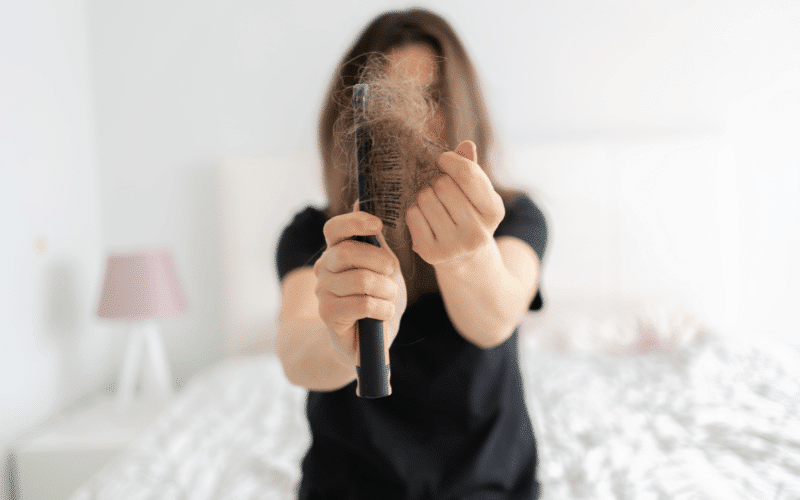4. Hair Loss: Beyond Normal Postpartum Shedding

Postpartum hair loss is a common phenomenon experienced by many new moms. Your luscious, thick pregnancy hair starts falling out, often in alarming amounts.
However, this hair loss is usually temporary and part of the body’s natural recovery process after childbirth. But, if you notice that your hair is thinning significantly or you’re developing bald patches, it might be due to postpartum thyroiditis.
Hair loss associated with postpartum thyroiditis is different from the typical postpartum hair shedding. It is more pronounced, often causing noticeable thinning of hair across your scalp or even leading to bald patches. This hair loss can be quite distressing, especially when combined with the other physical and emotional changes of new motherhood.
The thyroid gland plays a critical role in various body functions, including hair growth. Thyroid hormones, in the right quantities, contribute to a healthy hair growth cycle.
However, the inflammation of the thyroid gland in postpartum thyroiditis can disrupt this delicate balance, leading to an underactive thyroid (hypothyroidism) or overactive thyroid (hyperthyroidism) phase. Both these phases can cause significant hair loss.
During the hypothyroidism phase, which can last up to a year, your body doesn’t produce enough thyroid hormones, leading to a slower metabolism and lower energy production. This slowdown can impact your hair follicles, causing your hair to fall out more than usual.
On the other hand, during the hyperthyroidism phase, which usually lasts 1-2 months, your body produces an excess of thyroid hormones. This overproduction can accelerate your body’s processes, including your hair growth cycle. This acceleration can cause your hair to move faster from the growing phase to the resting phase, after which it falls out. (4)